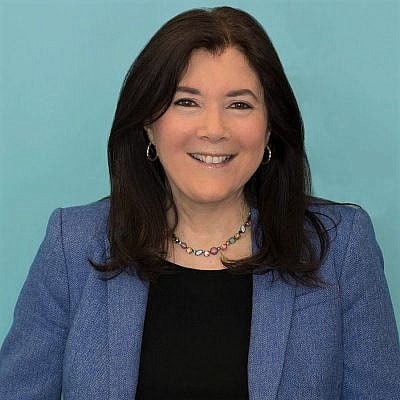 Photo from Wikimedia Commons.
Photo from Wikimedia Commons. Less than a year ago, I decided it was high time for me to visit Hebron. After all, Hebron is the world’s oldest Jewish city, is frequently at the center of controversy, and I had never been there.
I went to Jewish day school as a child. In my studies I learned that Hebron, which is mentioned 87 times in the Torah, was the place where Abraham bought land to bury his beloved wife Sarah, and where he was also eventually buried. According to Genesis and traditional Jewish understanding, Isaac and Jacob are also buried there, along with Rebecca and Leah. Many believe that Adam and Eve are buried there, as well.
The real estate arrangement between Abraham and the Hittites of Hebron, wherein Abraham paid 400 shekels of silver for the property, is recorded in one of oldest documents available, the Torah (Genesis 23:16). Scholars believe the Old Testament was written more than 2,500 years ago.
Hebron is also important in Islam because it shares a legacy with Judaism going back to Abraham. I was very much looking forward to seeing and experiencing Hebron, while at the same time, my group felt a sense of anxiety from the beginning of our trip until the end. We rented a bulletproof bus and had two armed guards with us for the day.
On the way to Hebron, I was thinking about all kinds of tragic things. I thought about the massacre of the Hebron Jewish community in 1929 because of the incitement to murder Jews at the time, led by Haj Amin al-Husseini, who later collaborated with Hitler. I thought about how Jordanian and other rulers of the past had denied Jews the right to pray in the Tomb of the Patriarchs. I thought of Baruch Goldstein’s horrific massacre of 29 Muslims who were praying there, amid a series of attacks by extremists from both sides in the 1990s. I remembered Shalhevet Pass, a 10-month-old baby who was murdered in her stroller by a Palestinian sniper in Hebron in 2001.
The murder of Shalhevet was part of the reason a few lay leaders, including my husband, Jerry Rothstein, Esther Renzer and I, were compelled to begin StandWithUs three months after this tragedy. And I recalled the murder of 13-year-old Hallel Yaffa Ariel, barbarically stabbed while she was sleeping in her bed in June of 2016.
“Bringing peace to Hebron will require wrestling with and unwinding all of this history, religious connection and general complexity.”
Today there are approximately 900 Jews living in Hebron, along with a nearby community of 7,000 Jews in Kiryat Arba. The Palestinian population in the city has grown to more than 200,000.
The Jews who live there have made it their mission to maintain a Jewish presence in Hebron, which houses the tombs of the matriarchs and patriarchs of the Jewish people. They believe they are the living defenders of the tombs and of the city itself. I imagine they feel that they are hated by their Palestinian neighbors and fear them, because of all the murders and attempted attacks they have faced. Fear and hate go together, and are tragically a constant presence in this holy city.
Hebron is one of the most tense places in the world. You can feel it in the air. The Israel Defense Forces is there all the time, tasked with preventing violence between two communities in conflict and with keeping visitors safe.
The military’s presence in the city has been a source of tension and controversy in the region and elsewhere, but continues because no one has found a better way to ensure freedom of worship for Muslims and Jews there. Indeed, a few days after our trip to Hebron, the army prevented a stabbing against tourists who were stepping off a bus just like ours.
Bringing peace to Hebron will require wrestling with and unwinding all of this history, religious connection and general complexity.
It’s common among critics of Israel to show a deeply one-sided portrayal of Hebron; to rail against a Jewish extremist, for example, but ignore that the city is known as a stronghold of support for Hamas; to speak of the hardships Palestinians face because of Israeli restrictions, but ignore the horrific violence (and constant threat of violence) that has led to those restrictions in the first place.
When we teach our children and friends about Hebron, we shouldn’t settle for the one-sided takes of Israel’s critics. We owe them a fuller picture.
Roz Rothstein is the CEO and co-founder of StandWithUs.























 More news and opinions than at a Shabbat dinner, right in your inbox.
More news and opinions than at a Shabbat dinner, right in your inbox.